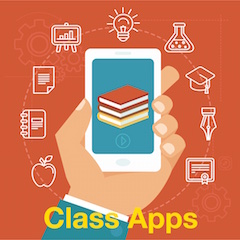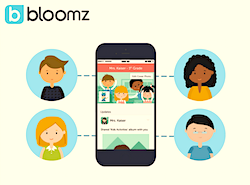Boosting Parent and Family Engagement
A MiddleWay Blog
 Whenever teachers “get to talking” about parents and caregivers, we can sound a bit like the little girl in Goldilocks and the Three Bears:
Whenever teachers “get to talking” about parents and caregivers, we can sound a bit like the little girl in Goldilocks and the Three Bears:
✻ This parent is TOO involved.
✻ Those parents aren’t involved ENOUGH.
✻ If only my student’s parents could get it JUST RIGHT.
We know in theory that parent engagement can have an immense impact on student learning. Research shows a significant connection between parental involvement and kids’ self-esteem, motivation, engagement, and of course, academic achievement (Sylva, Jelley, & Goodall, 2018).
But, as frequently overwhelmed educators, it’s tempting to view parents’ efforts in extremes: either they are fully committed to our way of doing things or characterized by low expectations and apathy.
Parent engagement should never be judged on a PASS/FAIL basis. Though some homes might seem indifferent and unsupportive, the data shows that a vast majority of parents truly value academics and possess strong, positive aspirations for their children’s education (Hattie, 2009). And that includes parents with kids in middle school, where full engagement can seem especially difficult.
The truth is that, in comparison to elementary schools, middle schools present unique challenges to families. They have more students. The buildings are larger, and so are the classes. Parents sometimes face a steep learning curve as they seek to reach out and interact with an increased number of teachers and administrators. The effort required to stay informed and engaged in your student’s academic progress increases geometrically as kids leave elementary (Murray et al., 2014).
Reaching out to parents
With some front-end planning and strategic use of technology, teachers and administrators can mitigate many of these challenges by reaching out to parents in a number of “smart” ways:
✻ Build a clear, consistent, accountable communication system. Academic progress and weekly updates can be sent in a variety of ways (via calendars, newsletter, email, website, text messaging, etc.) about key topics, assignments, resources, and events. (Be respectful of parents’ time by saying more with less.)
✻ Work with colleagues to develop one or two streamlined communication platforms that are accessible to parents and consistent across the building. Imagine being a parent with multiple children, each with multiple teachers who send updates home using different apps and tools. Parents appreciate staying in the know but can be quickly inundated and overwhelmed when every single teacher uses a different method.
✻ Consider the diverse needs and circumstances of families in your community. Be aware that many parents and guardians might not have a computer in their home, voicemail set up, or even access to a phone. Don’t become completely dependent on tech solutions.
✻ Reduce parental engagement barriers by making ourselves accessible through flexible conference hours and family supports (including translators and liaisons who represent the demographics and languages of your community).
✻ Use community outreach points to make contact – afterschool programs, sports, health clinics, job training and other services for students and adults (Epstein et al., 2018).
Technology to Connect Parents and Teachers
Technology provides a number of ways for educators to communicate and engage with parents, build trust and relationships, and help them feel connected with their child’s classroom experience and performance.
Remind continues to be one of the best ways to communicate quickly and safely with parents. Teachers can share messages and classroom updates (without disclosure of anyone’s personal contact information) to individuals or groups. Each update can be translated into 70 different languages. Remind also permits parents/students to respond to teachers (but this feature can be turned off if desired), and allows teachers to collect funds for supplies or fundraisers.
Bloomz is a free, user-friendly tool that reduces the need for newsletters and agendas through the use of real-time communication with parents. It includes 2-way messaging, behavior tracking, and ability to share student portfolios. It can also be used to facilitate organization of activities such as conferences and volunteer programs.
Classting is another great tool for connecting teachers, students, and parents. It makes it simple to share announcements and links to assignments, study materials, and announcements in real time via smartphones and free SMS.
Classtag is another slick way to help teachers and parents save time through messaging. Teachers set up a free account and create a class, then add parents directly or send them an access code to sign up on their own and join the class. It’s a great way to share announcements, videos/photos, newsletters, class calendars, and supply lists as well as to schedule events and conferences.

Strong relationships to build student success
Student success often hinges upon our willingness and ability to communicate, reach out to, and build partnerships with parents and other significant family members and caregivers.
Teachers can boost parent engagement by working collaboratively with colleagues and administrators to break down barriers, streamline communication, and find new ways to inform and involve parents.
References
Epstein, J. L., Sanders, M. G., Sheldon, S. B., Simon, B. S., Salinas, K. C., Jansorn, N. R., … & Hutchins, D. J. (2018). School, family, and community partnerships: Your handbook for action. Corwin Press.
Hattie, John. Visible Learning : A Synthesis of over 800 Meta-Analyses Relating to Achievement, Routledge, 2008. ProQuest Ebook Central, http://ebookcentral.proquest.com/lib/byui/detail.action?docID=367685. Created from byui on 2019-12-06 13:50:14.
Machen, S. M., Wilson, J. D., Notar, C. E. (2005). Parental involvement in the classroom. Journal of Instructional Psychology, 32, 13-16. [Google Scholar]
Murray, K. W., Finigan-Carr, N., Jones, V., Copeland-Linder, N., Haynie, D. L., & Cheng, T. L. (2014). Barriers and facilitators to school-based parent involvement for parents of urban public middle school students. SAGE open, 4(4), 2158244014558030.
Sylva, K., F. Jelley, and J. Goodall. 2018. Making It REAL. London: The Sutton Trust. [Google Scholar]
Williams, T. T., & Sánchez, B. (2013). Identifying and decreasing barriers to parent involvement for inner-city parents. Youth & Society, 45(1), 54-74.


































